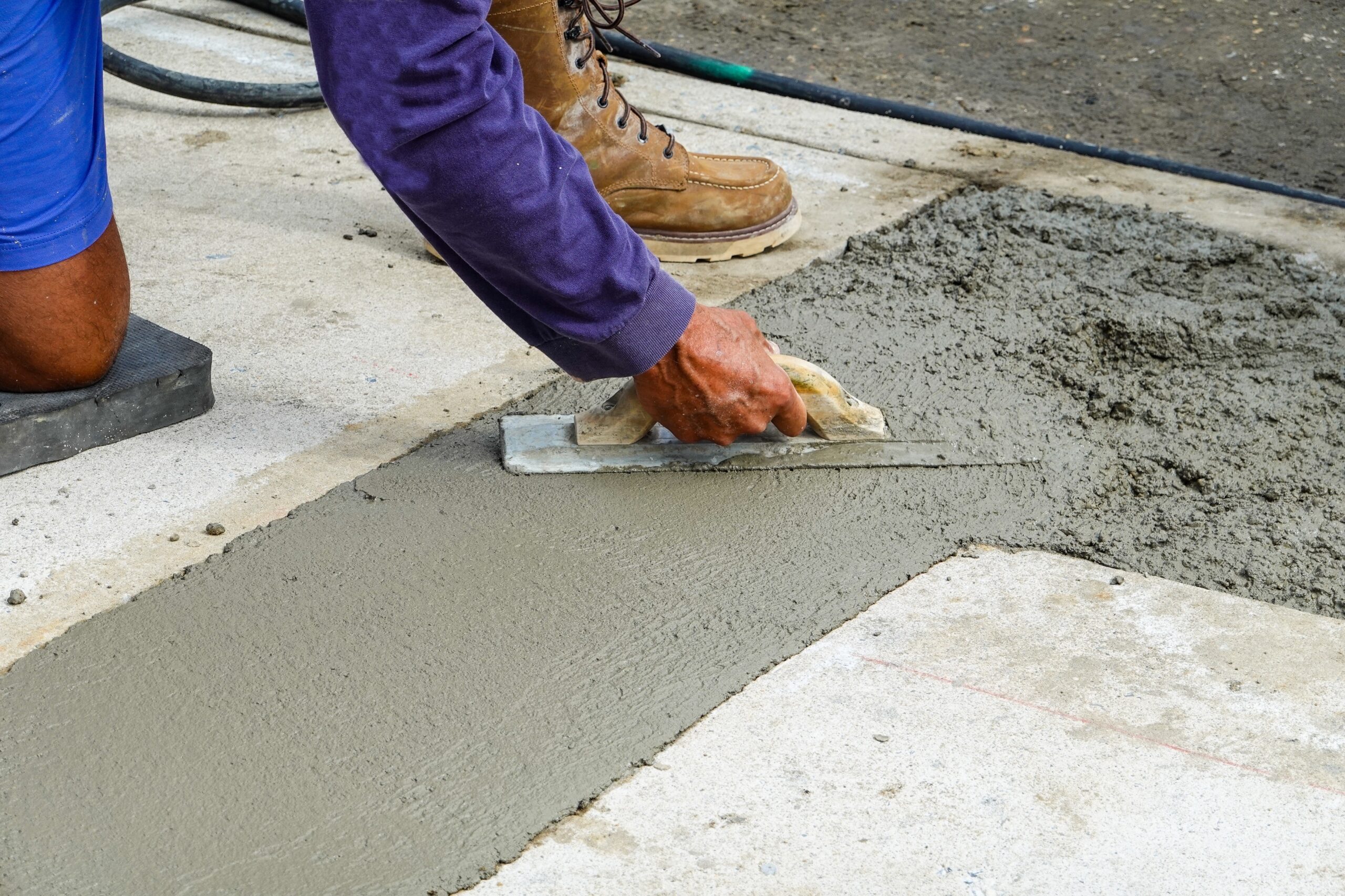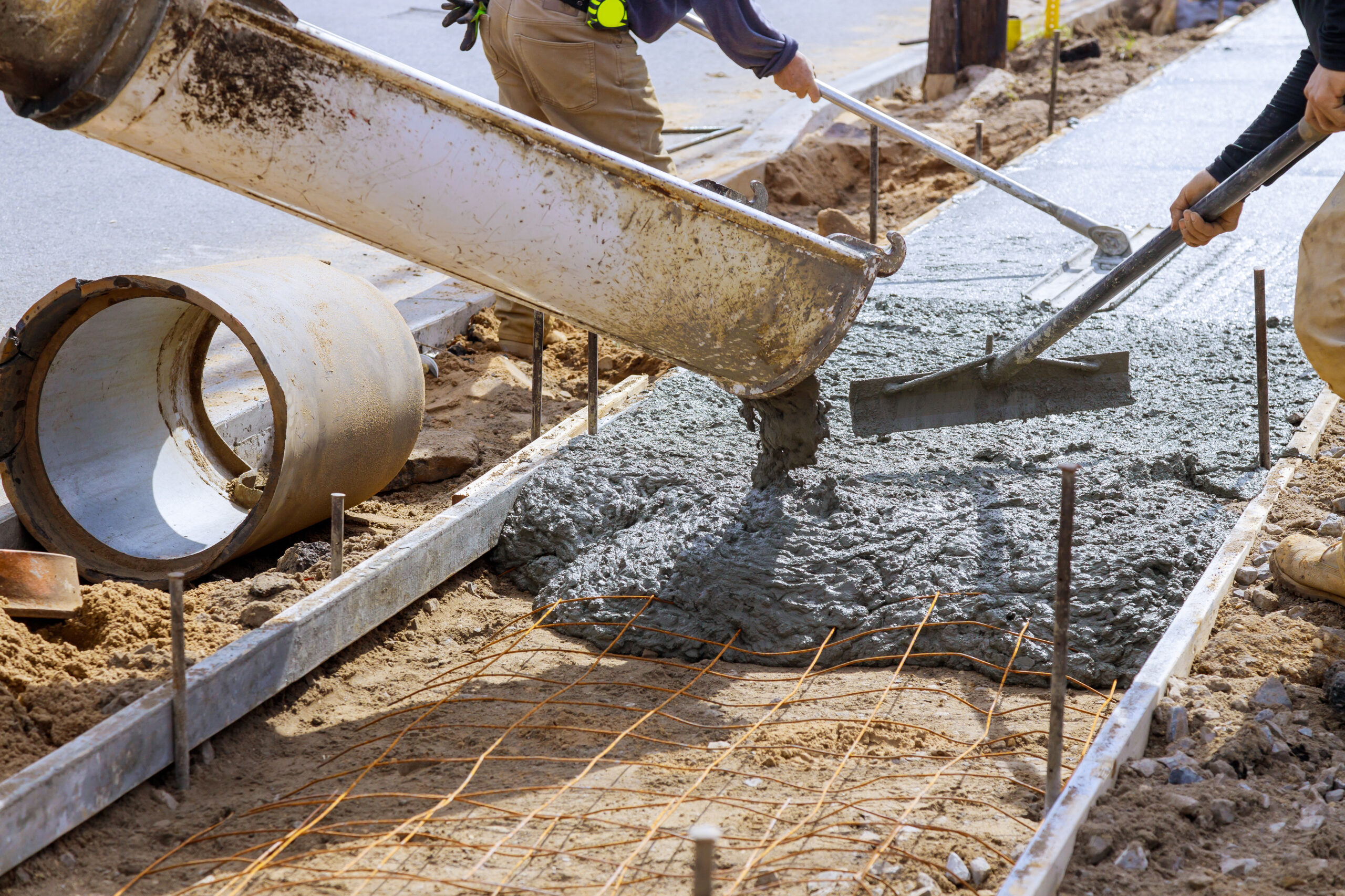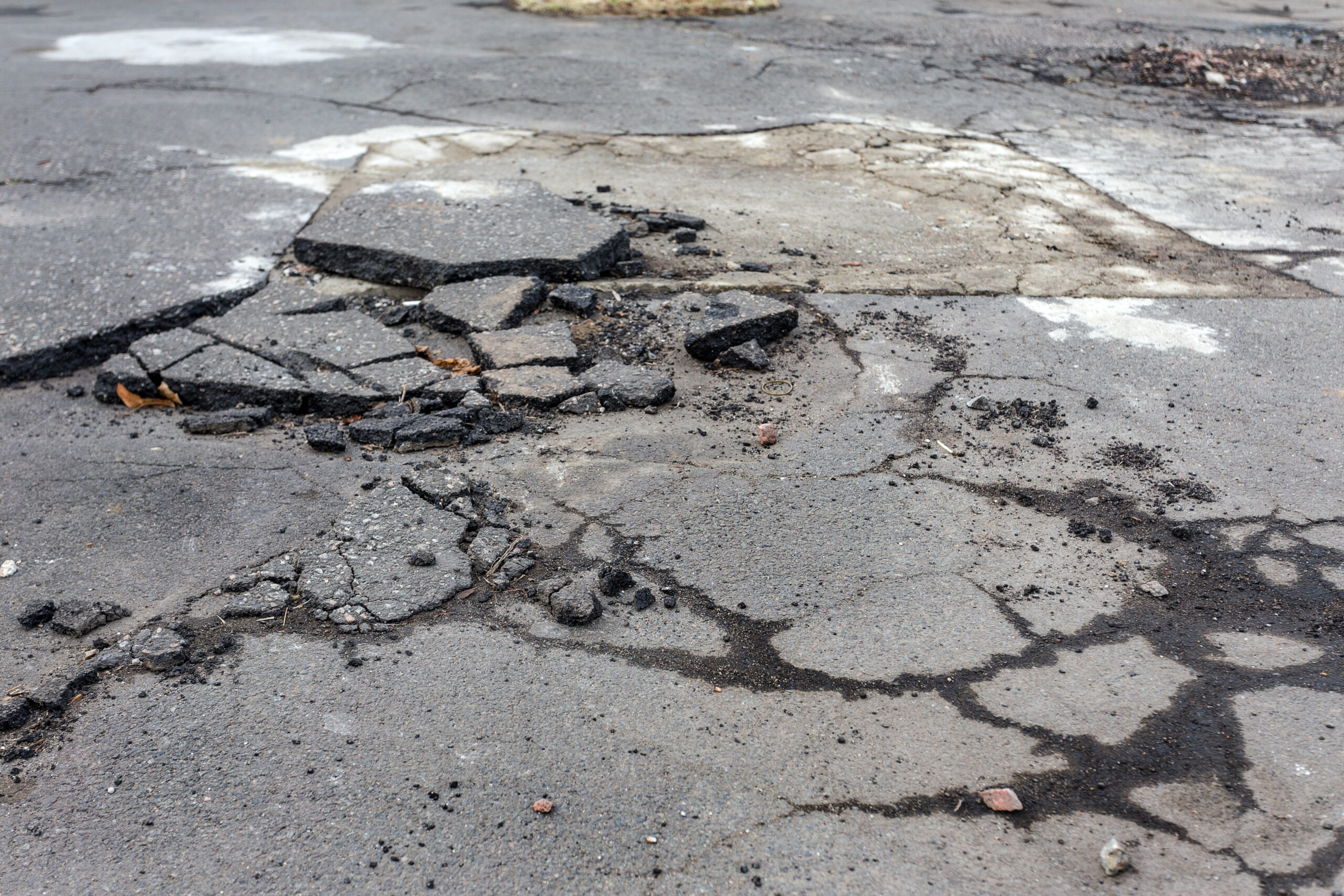Your property’s concrete sidewalks are one of its most visible and hardworking assets. Yet, they are often overlooked until a glaring crack, uneven joint, or winter damage creates an urgent hazard.
In fact, a single trip hazard can quickly escalate into a serious liability; according to Bureau of Justice Statistics–based data as per Forbes, the median award in premises liability cases—including injuries from dangerous property conditions like sidewalk slips and trips—is around $90,000, highlighting the significant financial risk of reactive maintenance.
The key to avoiding these issues is shifting from a reactive mindset to a proactive strategy. So, what is the most effective way to protect your investment?
A seasonal maintenance checklist for concrete sidewalks is the answer. This simple but powerful tool allows you to systematically inspect, maintain, and prepare your walkways for the unique challenges of each season.
By following a structured plan, you can catch minor issues before they become major expenses, ensuring your sidewalks remain safe, functional, and visually appealing year-round, ultimately lowering your total cost of ownership and reducing risk.
1. Why Seasonal Sidewalk Care Protects People and Budgets
Sidewalks are not just slabs of concrete. They are liability zones that can make or break your safety record and your budget. Trips, slips, and falls are among the most common incidents that property managers face, and the costs are significant.

According to the U.S. Bureau of Labor Statistics, falls, slips, and trips led to 885 workplace fatalities in 2023 and 450,540 cases with days away from work in 2022, illustrating the scale of the risk and the potential budget impact for organizations.
By creating and following a commercial sidewalk maintenance plan, property managers gain predictability. Seasonal maintenance reduces emergencies, improves inspection outcomes, and extends the life of concrete surfaces.
How proactive care supports safety and savings
- Liability reduction: Even a small displacement can cause a major injury. Seasonal inspections and timely repairs keep hazards under control and reinforce why well-maintained sidewalks improve safety.
- Lifecycle planning: Concrete that is regularly sealed and repaired lasts far longer. Preventing water intrusion and freeze-thaw damage protects your investment.
- Inspection readiness: City inspectors and insurance auditors want to see that you are taking preventive action. A log of seasonal maintenance demonstrates compliance and preparedness.
- Budget control: It is always less expensive to seal cracks than to replace entire panels. By spreading maintenance across seasons, property managers avoid surprise expenses.
How does seasonal sidewalk care actually lower long-term costs?
Seasonal maintenance catches minor issues like cracks or drainage problems before they escalate into expensive repairs or replacements. Investing in minor upkeep now saves significant money compared to emergency fixes later.
2. The Inspection Playbook with Objective Thresholds
An effective maintenance program begins with inspection. Without a systematic process, hazards go unnoticed until they cause problems. A sidewalk inspection checklist ensures consistency and accountability across your property team.
Building an effective inspection process
Start by mapping the entire property and creating an inspection route. Assign responsibility to a facilities team member or vendor, and always use a written log. Each inspection should record:
- Panel locations (use IDs or a grid map)
- Vertical displacements
- Crack sizes and counts
- Ponding depth and duration
- Spalling and scaling severity
Take photos of every issue, and include measurements where possible. This creates a dated record that protects you in the event of a claim or inspection.
Numeric triggers that require action
- Vertical displacement: A rise of one-half inch is an immediate trip hazard. For ADA-accessible routes, the threshold is one-quarter inch.
- Cracks: Three or more cracks per panel or cracks wider than one-quarter inch should be scheduled for repair.
- Ponding: Standing water over one-quarter inch deep indicates drainage or settlement problems.
- Spalling: Depths over one-half inch compromise surface strength and require corrective action.
According to the ADA Standards, accessible walking surfaces may have no vertical change greater than 1/4 in (6 mm) unless beveled, and the cross-slope must not exceed 1:48 (2%), which is why many agencies treat 1/2-inch offsets as hazards requiring correction.
By applying these objective thresholds, property managers can move issues from “watch” to “fix” without debate.
How often should a property manager inspect sidewalks?
A formal inspection should be performed at least once per season, with additional checks after severe weather events. This ensures hazards are caught early and logs remain current for insurance and compliance purposes.
3. Vegetation and Root Management Around Walkways
Trees and landscaping make properties more attractive, but they also bring unique challenges for sidewalks. Tree roots are notorious for pushing up slabs, creating trip hazards and long-term structural issues.
Research synthesized by the USDA Forest Service documents widespread conflicts between tree roots and sidewalks and evaluates mitigation approaches, including root barriers that reduce shallow root development near slabs.
Keeping roots from lifting sidewalks
Colorado properties often feature shade trees along walkways or near parking lots. While these enhance curb appeal, their root systems can displace panels over time. Identifying early signs of root intrusion prevents costly replacement projects.
Practical strategies for property managers
- Install root barriers along the drip line to guide roots downward.
- Schedule seasonal pruning with an arborist to control aggressive growth.
- Monitor recurring offsets and plan for panel adjustments when needed.
- Coordinate landscaping and hardscaping so trees and sidewalks can coexist without conflict.
A small investment in vegetation management today prevents expensive structural problems tomorrow.
Can tree roots be managed without removing the tree?
Yes. Root barriers, proper pruning, and strategic panel adjustments often allow trees to remain while protecting sidewalks. Removal is typically the last resort when other options are no longer effective.
4. Drainage Tune Ups That Prevent Settlement
Water is the most destructive force sidewalks face. Poor drainage leads to erosion, voids, and panel settlement. Seasonal checks should always include drainage.
How drainage impacts long-term performance
When water pools on sidewalks or along edges, it seeps beneath the slab. Freeze-thaw cycles then expand and contract that moisture, leading to shifting and cracking. Once voids form under panels, settlement and uneven surfaces are inevitable.
Key drainage maintenance steps
- Extend downspouts at least 5 feet away from walkways
- Regrade soil along edges to maintain a positive slope.
- Add fill soil at low edges where washout has occurred.
- Check irrigation heads to ensure they’re not saturating sidewalk joints.
- Consider French drains or swales for high-flow areas.
By directing water away from sidewalks, property managers dramatically extend the lifespan of their sidewalks.
What is the simplest way to spot drainage problems near sidewalks?
Look for areas where water consistently pools after rain or irrigation. Ponding, soggy soil, or erosion at slab edges usually mean drainage adjustments are needed.
5. Cleaning and Stain Removal That Will Not Harm the Surface

Clean sidewalks aren’t just about appearances. Dirt, leaf stains, and oil drips break down the surface of concrete, weakening it over time.
The right way to clean sidewalks
Pressure washing is effective, but it must be done carefully. Too much pressure or the wrong nozzle can scar the surface. Always use a wide fan tip and limit psi to a safe range. Combine this with biodegradable detergents, and spot test before applying to large areas.
Seasonal cleaning checklist
- Perform deep cleans before resealing to ensure proper adhesion.
- Remove leaf stains in the fall to prevent tannins from setting in.
- Use recovery mats to capture rinse water near entries.
- Train staff on proper psi settings and tip angles.
Can regular pressure washing damage concrete sidewalks?
Yes, if done improperly. Using the wrong nozzle, too much pressure, or holding the wand too close can scar the surface. Safe techniques with the correct psi and fan tip protect the concrete while cleaning effectively.
6. Joint Caulking and Sealing Cadence by Condition
Sidewalk joints allow panels to move, but they are also vulnerable points where water enters. Keeping joints sealed is one of the most important seasonal tasks.
Extending service life with proper sealing
Unsealed joints invite water, ice, and debris. Seasonal inspection should confirm whether the sealant is intact, cracked, or missing. Replacing failed sealant prevents freeze-thaw expansion and slab movement.
Best practices for sealing joints
- Use polyurethane sealants in exposed areas and silicone in areas requiring flexibility.
- Install backer rods for wide gaps to reduce material use and improve adhesion.
- Schedule resealing before winter each year.
- Plan warranty inspections for large projects to confirm performance.
How do I know when sidewalk joint sealant needs replacement?
If you notice gaps, cracks, peeling, or water pooling near joints, it’s time to reseal. A simple seasonal inspection will usually reveal whether sealant has failed.
7. Spring Actions
After months of snow, ice, and constant freeze-thaw cycles, sidewalks often emerge from winter showing new cracks, stains, and uneven panels. Spring is the season of renewal, making it the perfect time to reset your concrete sidewalks and prepare them for the year ahead. Property managers who prioritize spring maintenance set the tone for safe, attractive, and long-lasting walkways throughout the rest of the seasons.
What to focus on after winter
- Conduct a full-site walk to identify new damage.
Winter is hard on concrete. As snow melts, it reveals cracks, lifted joints, and ponding issues caused by expansion and contraction during freeze-thaw cycles. A thorough inspection in early spring ensures that no hazards go unnoticed. Problems documenting with photos and measurements also help establish a baseline for the year. - Fill cracks and reseal joints to keep out spring moisture.
Cracks that were small in the fall often widen during winter. Sealing them immediately in spring prevents spring rains from worsening the damage. Replacing failed joint sealant is equally important, since open joints allow water to reach the base and erode soil beneath the slab. - Clean gutters and ensure downspout extensions are in place.
Many drainage issues begin with clogged or broken gutters. Overflowing downspouts direct water straight onto sidewalks, where it seeps into cracks and edges. Spring is the right time to repair gutters, replace extensions, and confirm water flows away from the slab. - Add soil at sidewalk edges to support panels.
Winter runoff can wash away soil around sidewalks, leaving panels unsupported. Backfilling these areas with compacted soil restores edge support and prevents future settlement. - Schedule leveling or grinding where panels have shifted.
Frost heave and soil movement often leave panels misaligned. Correcting these shifts in spring eliminates trip hazards before pedestrian traffic increases in summer. Grinding or foam injection leveling are efficient solutions that save money compared to full replacement.
By treating spring as the “reset season,” property managers create a solid foundation for the rest of the year’s maintenance activities.
8. Summer Actions
Summer’s warm, dry weather creates the perfect conditions for major sidewalk repairs and resealing projects. Unlike the unpredictable rain or freeze-thaw cycles of other seasons, summer provides a stable environment that helps repair materials bond properly and sealers cure as intended. This is the season to tackle larger jobs that require dry surfaces and steady temperatures, which is why many property managers schedule their biggest projects in the summer months.
Summer priorities for sidewalks
- Pressure wash thoroughly with safe techniques.
A deep cleaning removes dirt, oil stains, and surface debris that weaken sealers and trap moisture. Use a pressure washer with the correct fan tip and psi to avoid etching or scarring the concrete surface. A clean base ensures new sealers adhere properly and last longer. - Test sealers with a water bead test.
Pour a small amount of water on the sidewalk. If it beads on the surface, your sealer is still working. If the water soaks in, it’s time to reapply. This simple test prevents premature wear and keeps sidewalks resistant to moisture and stains. - Apply a new sealer if water no longer beads.
Sealing in summer is ideal because warm conditions allow the product to cure evenly. Sealers lock out moisture, protect against stains, and add years to the life of concrete. Schedule sealing before fall so the surface is ready for wet and freezing conditions. - Lift settled panels with polyurethane foam or slab jacking.
Summer is the best season for leveling sunken panels because the ground is dry and stable. Using foam injection or slab jacking restores even surfaces, eliminating trip hazards without the cost of full replacement. State DOT research and specifications document polyurethane foam injection (slab lifting) as an effective method to re-level settled concrete panels, often with minimal downtime—making dry summer conditions ideal. - Inspect for burrowing pests.
Warm weather is when ground squirrels and other pests are most active. These animals can create voids under sidewalks, leading to settlement and uneven panels. Look for fresh burrow holes near edges and address them quickly.
9. Fall Actions
Fall is preparation season. With winter on the horizon, sidewalks must be sealed, cleared, and reinforced for the cold months ahead. This is the time to eliminate moisture traps, check drainage, and ensure all systems are in place to handle snow and ice. Property managers who focus on fall readiness enter winter with peace of mind, knowing their sidewalks are protected and their crews are equipped.
Fall checklist for sidewalk readiness
- Remove leaves daily to prevent staining and moisture traps.
Fallen leaves may seem harmless, but they release tannins that leave dark stains on concrete if left in place. They also hold moisture against the surface, encouraging freeze-thaw damage. Daily sweeping or blowing keeps sidewalks clear and attractive. - Seal cracks and joints before the first hard freeze.
Any opening in concrete is a direct entry point for water. Once freezing weather arrives, that water expands and causes cracks to widen. Sealing in the fall prevents this cycle and extends the life of the sidewalk. - Verify that all drainage paths are working properly.
Before winter storms hit, confirm that gutters, downspouts, and swales are clear and directing water away from walkways. Poor drainage in the fall means ice sheets in winter. - Check that snow removal crews and supplies are ready.
Inspect shovels, plows, and deicer supplies before the first snowfall. Ensure staff are briefed on safe techniques, including using plastic-edged tools and avoiding harmful deciders. A prepared crew reduces response time when storms arrive.
10. Winter Actions and Deicer Choices
Winter is the most demanding season for concrete sidewalks. Snow, ice, and deicing chemicals can all accelerate damage if not managed carefully. Sidewalks must remain safe for pedestrians, but safety measures should not come at the cost of long-term concrete health. With the right approach, you can keep walkways clear while minimizing surface damage.
Best practices for winter sidewalk maintenance
- Shovel early and often with plastic or rubber-edged shovels.
Removing snow before it compacts or refreezes reduces the need for chemical deicers. Plastic or rubber blades prevent scratching and spalling of the concrete surface. - Clear snow before it has a chance to refreeze into ice.
Snow that melts and refreezes creates slick ice patches. Clearing walkways quickly keeps them safer and reduces the need for heavy chemical applications. - Use traction sand near building entries and slopes.
Sand improves grip without damaging concrete. It’s especially helpful on sloped walkways and high-traffic areas where slips are most likely. - Avoid ammonium-based salts, which quickly deteriorate concrete.
Some deicers contain ammonium nitrate or ammonium sulfate, which aggressively break down concrete. Always check labels before applying. - Use calcium chloride or calcium magnesium acetate sparingly.
According to a Wisconsin Department of Transportation laboratory study, calcium chloride—and by implication, similar agents like magnesium chloride—can actually cause more damage to concrete than rock salt when used improperly. Therefore, even “safer” alternatives must be applied in moderation and always paired with frequent shoveling to minimize concrete deterioration. - Sweep up sand after storms to prevent buildup.
While sand provides traction, leaving it in place after storms can clog drains and create dusty walkways. Prompt cleanup keeps sidewalks looking neat and functioning properly.
Protecting Your Property with Expert Sidewalk Maintenance
Sidewalks may seem like a small detail, but they play a big role in safety, compliance, and curb appeal. A seasonal maintenance checklist for concrete sidewalks services helps property managers stay proactive, lowering liability, extending service life, and protecting budgets.

At Asphalt Coatings Company, we make that process easier with fast assessments, hazard removal, panel replacement, ADA upgrades, and drainage solutions. If your sidewalks are showing signs of wear—or if you want a proactive plan that prevents problems—contact Asphalt Coatings Company today. We’ll keep your property safe, compliant, and looking its best all year long.
FAQs about Seasonal Sidewalk Maintenance
1. Are all deicers harmful to concrete?
Not all, but many are. Rock salt is especially harsh. Safer options like calcium chloride or calcium magnesium acetate should be used sparingly, paired with shoveling and traction sand.
2. Do small cracks really need immediate repair?
Yes. Even tiny cracks let in moisture that expands during freeze-thaw cycles, making the damage worse. Early repair prevents bigger, costlier problems.
3. Can property managers handle inspections themselves?
Yes. With a simple log, photos, and measuring tools, most teams can track sidewalk condition. The key is consistency, and professional support is available if needed.
4. What’s the fastest way to address raised sidewalk panels?
Grinding or saw cutting smooths offsets quickly. For lasting fixes, foam lifting or replacement may be required. If roots are the issue, root barriers help prevent recurrence.


